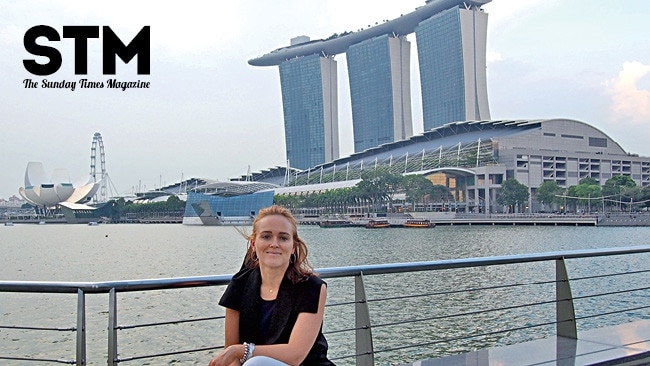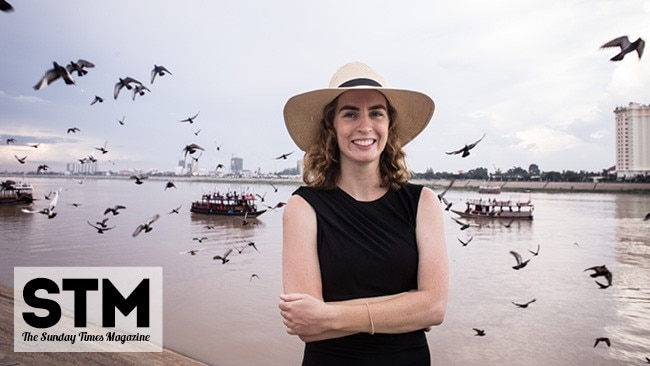Long Tan's trail of peace
FOLLOW Chris Pritchard on a trip to Long Tan in Vietnam and discover why it and its war memorial have become a mini-Gallipoli for many Australian tourists.

THE rubber plantation is eerily silent. An expanse of identical, well-spaced trees stretches in all directions as far as the eye can see.
Australian visitors walk quietly and slowly, strung along a broad but unplanned line with heads bowed. The boisterousness that preceded our arrival is suddenly absent.
We move across this former battlefield, long restored to more natural tranquillity, towards a target looming in the distance: a simple white cross in the middle of a forest, a gleaming centrepiece on an expanse of marble.
Twenty-four hours earlier, I share a canoe – expertly punted by a woman in a classic Vietnamese conical hat – with an Aussie war veteran.
As we explore some of the narrow, channels forming a latticework off the major waterways of the Mekong Delta, the ex-soldier leans back, relaxed in midday heat. "I think I prefer this place at peace – like now," he muses.
We drift lazily past rubber trees, rice fields, forests and fish farms. People, busy but unrushed, look up from their chores and wave.
A day later, the mood at Long Tan is sombre. An Anzac Day dawn service, despite a rural location, attracts close to 100 Australians, as it routinely does each year.
It's not Gallipoli but, given a remote location and much lower profile, numbers are impressive.
The Battle of Long Tan in August 1966 was a key event during Australia's involvement in the Vietnam War.
Long Tan, in fact, was the most famous battle fought by Australians during a conflict known officially in Vietnam as the American War. This scene of fierce fighting, a rubber plantation 40km northeast of Vung Tau, now seems an unlikely theatre of war.
Vung Tau, recently spruced up, is a beach resort 110km southeast of Ho Chi Minh City, formerly known as Saigon.
Numerous hotels and restaurants are strung along its seafront. Residents take brisk early-morning walks or do tai chi on its water's edge promenade.
A hydrofoil service from Ho Chi Minh City, ending opposite Vung Tau's lone Aussie pub, is a comfortable alternative to travel down the highway.
Australian units, supported by New Zealand and US personnel, won a victory at the Battle of Long Tan, fought partly in mud and unrelenting monsoonal rain.
The Vietnamese side officially acknowledges 245 deaths but Australian critics say the toll was higher.
While Australian forces were victors in this battle, anti-communist forces subsequently lost the war. But, some commentators suggest after noting the communist nation's subsequent surrender to capitalist policies, they arguably won the peace.
Tourism is booming.
A handful of companies, such as Australia's Monkey Bridge Tours – named after rickety bamboo footbridges that have often been replaced by concrete crossings of canals and other bodies of water – take veterans back to sites they remember.
On my most recent visit, I'm with a group that included veterans.
There is no disguising their fascination with battle memorabilia and oddities such as the Cu Chi tunnels, a subterranean system used by Viet Cong resistance fighters.
Parts of it have been thoughtfully widened and replicated for large-size foreigners.
With them I visit the site of a former Australian base at Nui Dat and pause at several memorials where captured or abandoned war detritus – helicopters, tanks and assorted weaponry – are displayed.
I recall that when Vietnam opened tentatively to foreigners 15 years ago, large numbers of visitors to a formerly off-limits country traipsed to Ho Chi Minh City's War Remnants Museum to see Vietnam's take on the conflict.
Other war-related destinations were also prominent on itineraries.
With the coming of mass tourism, numbers visiting these places dropped.
Now, it seems, another change is in the air. Crowds are back for tours of the Reunification Hall, the former palace where North Vietnamese army tanks crashed victoriously through iron gates on April 30, 1975, ending the war.
This reawakened interest in modern history is evident too, at the nearby War Remnants Museum, with outdoor displays of planes and weapons enhancing indoor exhibitions of photographs of war featuring soldiers on both sides.
A heavy emphasis on the effects of Agent Orange on humans exposed to the chemical proves unsettling for some visitors.
Indeed, some shun all this – preferring to wander through the delightful shopping district.
Vietnam remains one of Asia's cheapest shopping destinations: electronics (including cameras) are typically one-third cheaper than in Australia, tailor-made men's suits cost about $130, fitted ao dai (Vietnamese-style women's dresses) go for about $50. Bargaining is expected.
The food is as enjoyable a part of a visit to Vietnam as to nearby Thailand, though meals are less spicy.
Australian travellers reveal a special affinity with Vietnam, perhaps in part because of the prominent Vietnamese component in our own society.
I think again of the misty-eyed old Digger on the Mekong Delta canoe: "I loved this country when I was here in wartime – but I love it more now it's at peace."
Sunday Mail (QLD)



